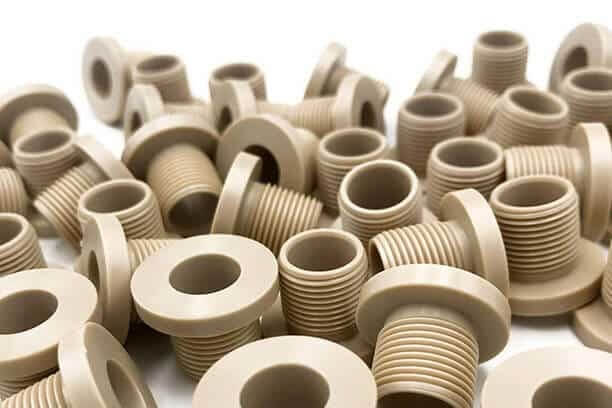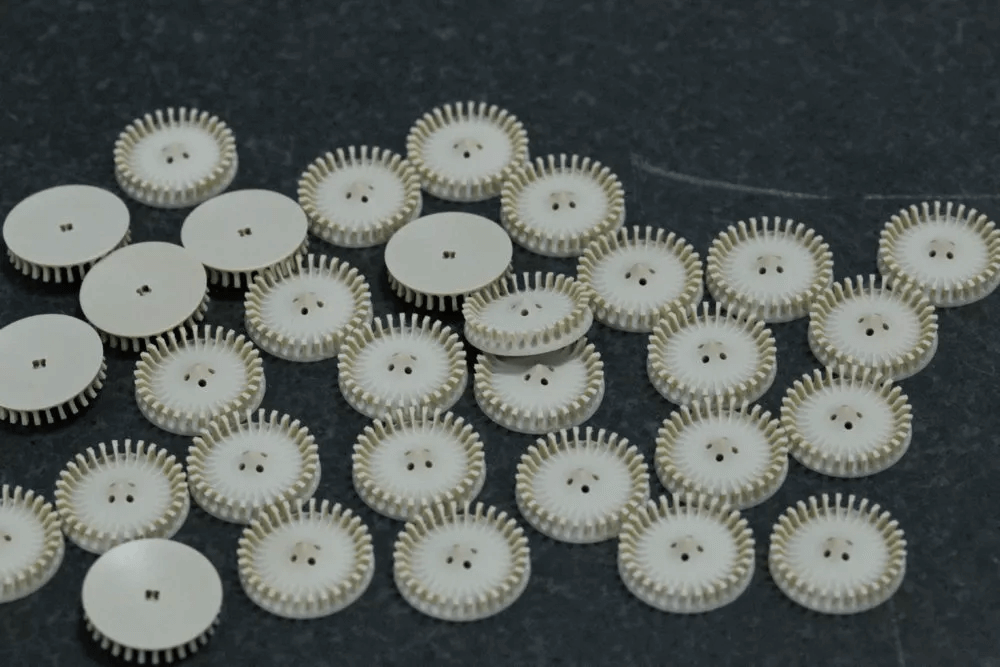PEEK machining comprehensive guide: tips, advantages
PEEK is a popular thermoplastic polymer used in objects as diverse as medical implants and cable insulation. The plastic is favored by manufacturers around the world for its excellent mechanical properties and high level of corrosion resistance. While PEEK is often used for injection molding and 3D printing, its high melting point suggests that it is suitable for subtractive processes such as CNC machining—although PEEK machining comes with its own set of challenges.
This article covers the basics of PEEK machining: PEEK material properties, the benefits of PEEK machining, common applications for PEEK machining, and tips on how to get the most out of your machined PEEK parts.
1.What is PEEK (Polyetheretherketone)?
PEEK, or polyetheretherketone, is a high-performance engineering thermoplastic that belongs to the PAEK family of materials. Widely used in industrial parts, this semi-crystalline material offers excellent strength, wear and abrasion resistance, and maintains its properties even at elevated temperatures.
PEEK grades offer similar chemical and water resistance to PPS. But PEEK has a melting point of 343°C and can be used at higher temperatures: it can be used continuously at 250°C and in hot water or steam without permanent loss of physical properties. This high-performance PEEK plastic is available in pellets, filaments for 3D printing, and rods/rods for CNC machining. It is typically classified as either industrial or medical grade.
2.What are the advantages of PEEK machining?
PEEK machining offers numerous advantages that can be divided into two categories: material advantages inherent to PEEK, and process advantages specific to machining PEEK materials using CNC machines.
①Material advantages of processing PEEK include:
1.Excellent chemical resistance
2.Extremely low moisture absorption
3.Abrasion resistance
4.Not affected by continuous hot water/steam
5.Some grades are biocompatible
6.Resistant to biodegradation
②Process advantages of PEEK machining include:
1.High accuracy
2.High repeatability
3.Tight tolerances
4.Relatively high melting point allows for faster feeds and speeds

3.What are the limitations of PEEK machining?
Although many machinists use PEEK plastic as a reliable alternative to certain metals, there are still some limitations to processing thermoplastic polymers. These include:
1.Special treatment is required to minimize internal stress and heat-related cracks
2.Annealing is required
3.Poor heat dissipation
4.May break if drilled too deep
4.What are the applications for PEEK machining?
PEEK is a material with an extremely wide range of applications, some of which CNC processing is better suited for than other manufacturing technologies. Industrial-grade PEEK plastics are used in the aerospace, automotive, chemical, electronics, and energy industries, while medical-grade PEEK plastics are used in healthcare and dentistry.
5.Tips for processing PEEK
PEEK is a processable thermoplastic, but critical steps must be taken before, during, and after processing to provide the best end product.
- Annealing: Annealing is a process performed on PEEK rods to relieve stress and reduce the likelihood of stress and surface cracks in the PEEK material during processing. Annealed PEEK is also less likely to deform. Depending on the time required for processing, multiple annealing stages may be required.
- Cutting tools: In most cases, PEEK can be processed using silicon carbide cutting tools. If the PEEK is reinforced with carbon fiber, or extremely tight tolerances are required, diamond tools should be used. In addition, contamination can be avoided if the cutting tools used are not used for metals.
- Wet or dry: Since PEEK does not dissipate heat, it needs to be cooled during processing to prevent deformation or fracture. Standard liquid coolants can be used, unless medical parts are being machined, in which case PEEK materials need to be cooled with pressurized air. This is because liquid coolants can affect the biocompatibility of PEEK.
- Drilling: Deep hole drilling can cause cracks because PEEK has a lower elongation than other plastics.
6.PEEK machining, PEEK 3D printing, or PEEK injection molding?
PEEK material is not limited to CNC machining. It can also be processed by additive manufacturing or injection molding. Which process to choose depends on the desired end product as well as time and budget constraints.
For 3D printing PEEK, both FFF filaments and SLS powders are available. However, PEEK’s availability in CNC machining and injection molding still far outweighs the options for additive manufacturing. 3D printing is becoming increasingly popular for the printing of biocompatible medical implants, as complex (and partially hollow) geometries can be easily achieved.
Injection molding PEEK resin is widely used in applications such as medical and aerospace. However, its melting point is at the upper limit of the capabilities of many injection molding machines, so it can be considered a specialty material. Learn more in our guide to plastic CNC machining and how to choose the best type for your project.
